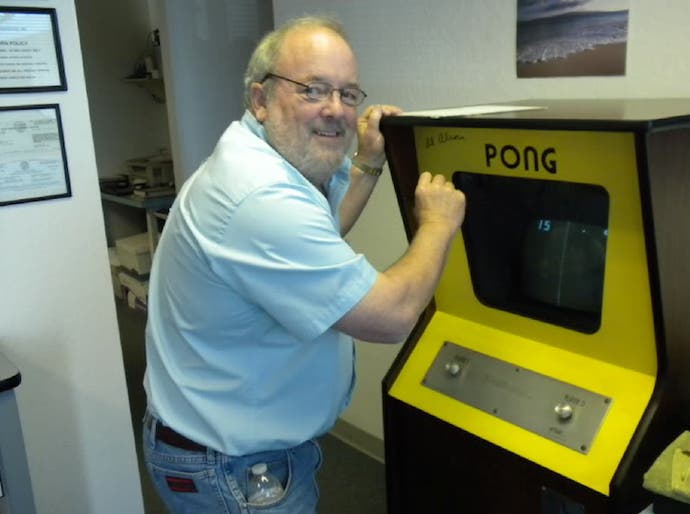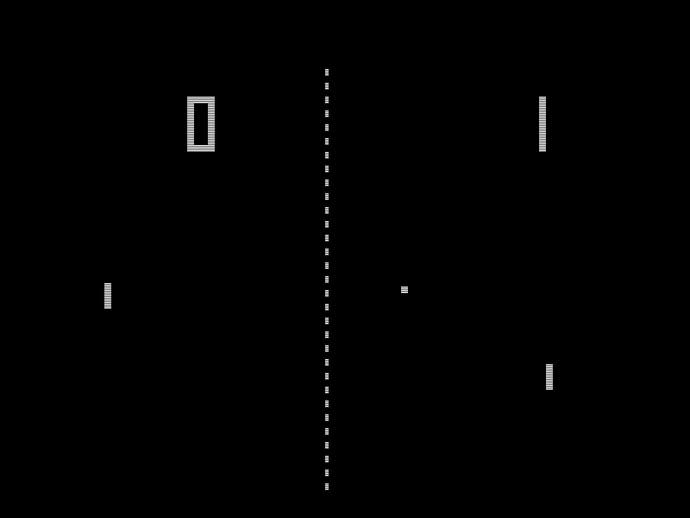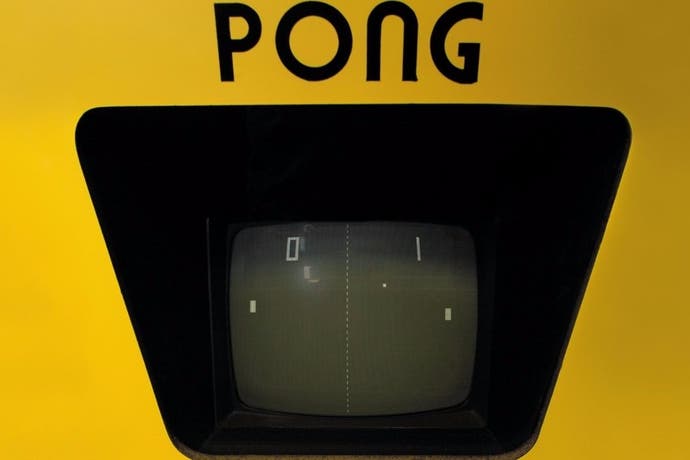The Shared History of Tennis and PONG
What's Love got to do with it?
In 1972, Atari co-founder Nolan Bushell hired an electrical engineer named Allan Alcorn to work for his fledgling video game company. Alcorn was experienced in computer science but had never been involved in video game development, so Bushell set him a practice exercise: replicate a game with two paddles and a moving spot that he'd recently seen running on the Magnavox Odyssey. It was a simple tennis-based game, and Alcorn soon had his own version up and running.
However, he then had a rather important realisation: the game was boring.
Alcorn looked at the programmed ruleset and decided to make a few small changes in an effort to make the gameplay more enjoyable. The paddle was split into eight sections, each returning the ball on a slightly different angle, and the ball was made to slowly accelerate the longer it stayed in play. The end result, PONG, so impressed Bushnell that he immediately decided to publish it through Atari, and the rest is history.

PONG's delicate design adjustments are the best kind of subtle disruption: they alter the standard rules of gameplay just enough to ensure the final game is significantly more exciting. These important tweaks, along with the feature/bug that the paddles couldn't quite reach the top of the playing area, raised Alcorn's version far above its Magnavox inspiration by making the gameplay more difficult, dynamic, and exciting. A PONG machine was first placed in a Sunnyvale bar in 1972, and since then the game's ubiquity has allowed millions of players to gleefully live out their tennis dreams.
However, the sport shares more with PONG than mere inspiration; it actually has a remarkably similar event buried in its own muddled history.
Tennis is an intrinsic part of British culture that, like Noel Edmunds and Status Quo, is now taken totally for granted. The annual milestone of Wimbledon hope-dashing comes decorated with strawberries and cream, expensive hats bobbing amongst overpriced ticket stubs. What could be more British than Cliff Richard entertaining the crowd when it rains? Or accusations of deep, ingrained corruption? Not much. Tennis is as British as cricket and fried batter.
However, for a sport that's so well-known, many of the game's stranger intricacies are blindly accepted. There's no straightforward points here, progression instead tracked with mysterious code: 15, 30, 40, deuce, advantage, game, set, match. Love. Love. Considering there isn't another sport on Earth than openly uses a human emotion on its scoresheet, least of all the human emotion, we barely bat an eyelid when love is thrown around on the court. There are many theories about the first origins of tennis' weird scoring system, but one of the earliest references comes from the French nobleman poet Charles d'Orléans. A survivor of the Battle Of Agincourt, found under a pile of corpses after becoming over-encumbered in his armour (he was playing without mods), he spent the next twenty-four years writing poetry whilst imprisoned in various English castles.
In 1439, on his forty-fifth birthday, he apparently had an amazing day. Unfortunately, this only highlighted the tedium that filled the rest of his life, which led to a sudden, shocking realisation: Old Age (capitalisation his) was slowly consuming him. And so, in the depths of a midlife crisis, he wrote a forlorn poem (translated here from Medieval French), using one of his favourite pastimes - tennis - as an allegoric base:
I have played tennis with age
So long that now I am
At forty-five: for high stakes
We play, never for nothing.
I feel strong and vigorous
To determine the course of the game till now.
I fear nothing but Worry.
[...]
His reference here to forty-five would have caused the heads of his captors and listeners to slowly nod in appreciation. It is accepted that, at that time, tennis followed the main clock positions as a scoring structure - 15, 30, 45, and 60 for the win. This system's roots lay in the large clock face that was held on court to clearly show the players' progression, a hand sweeping round to the next major angle with each point won. When Charles d'Orléans wrote his ballad, his age was then parallel to the game's moment of victory, just floating outside his grip. Old Age waited on the other side to snap him away if he failed. High stakes indeed.

Unfortunately for Charles, his beloved tennis would change, leaving his stretched analogy behind. Some time after he penned his poem - and presumably lost his tennis match with Old Age - the rules of the game were altered. The third score point that he referenced was reduced from forty-five to forty in order to incorporate the new idea of deuce, and the system of Advantage. From this point, the player was two points from victory; if they won the deuce - an English derivative from the French deux - the clock would spin to fifty and they'd slip into Advantage. Another won point would see them turn to sixty, thus completing the clock face as before. But a loss in Advantage then slid them back to forty, where their rival would have another chance to snap at their heels.
Advantage is another example of a rule change that fundamentally disrupts the entire game. Gone is the polite push towards sixty over four won volleys; instead, a tempestuousness is injected just before the moment of victory. Suddenly, an ailing rival can grasp their luck and fight back as the other player desperately tries to take advantage of the situation. The high drama of the final point leads to decimations and comebacks; showy final slams or nail-scraping returns with shocking twists. This was a move to make the game impossible to win by just one point, hoping it would be more exciting as a result. And it certainly succeeded. Advantage is now arguably a highlight of the modern game, that sliver of opportunity that can either be grabbed or thrown into the wind, both eventualities somehow being equally exhilarating for the viewer. Charles d'Orléans feared nothing but Worry when he was just one point from victory; Advantage takes this endgame stress and squeezes even tighter.

As influential as this change was, Théophile de Viau's bawdy tennis reference in Parnasse Satyrique ("If you kiss her, count fifteen/If you touch the buds, thirty/If you capture the hill, forty-five comes up.[...]") gives us evidence that 17th Century France was still using forty-five in its own scoring. Britain, though, had moved ahead with Advantage and its success was quickly ensuring it would become the de facto form of the game.
The overhaul of tennis' endgame over the years doesn't explain the appearance of love, though; that actually comes from a different source. There are a few competing theories; a mispronunciation of the French oeuf (egg), or the Dutch lof (honour). However, I like the theory that it was a romantic reference created by the British: when both rivals are at zero, all they have is love. Gentlemen duelists, preparing to fight in their best whites. Leave it to the English to aspire to romantic greatness at the beginning of each game.
But I don't think love is the most important thing to take from tennis' convoluted history, nor just the sheer thrill of the moment of advantage. What should be learned and remembered from tennis and PONG's parallel history is how a small change of the traditional rules can completely alter a game for the better. When designing and formulating a ruleset designed for entertainment, it's easy to remain in holding patterns of established behaviour, but the tangible power of small changes invites us to shake up our own set ways.
Allan Alcorn shared Charles d'Orléans' belief that for high stakes we play, never for nothing. His refusal to accept the lack of excitement in a seemingly simple ruleset ensured that, in PONG, the stakes were always high. That's an attitude from which many modern games' designs could benefit.

